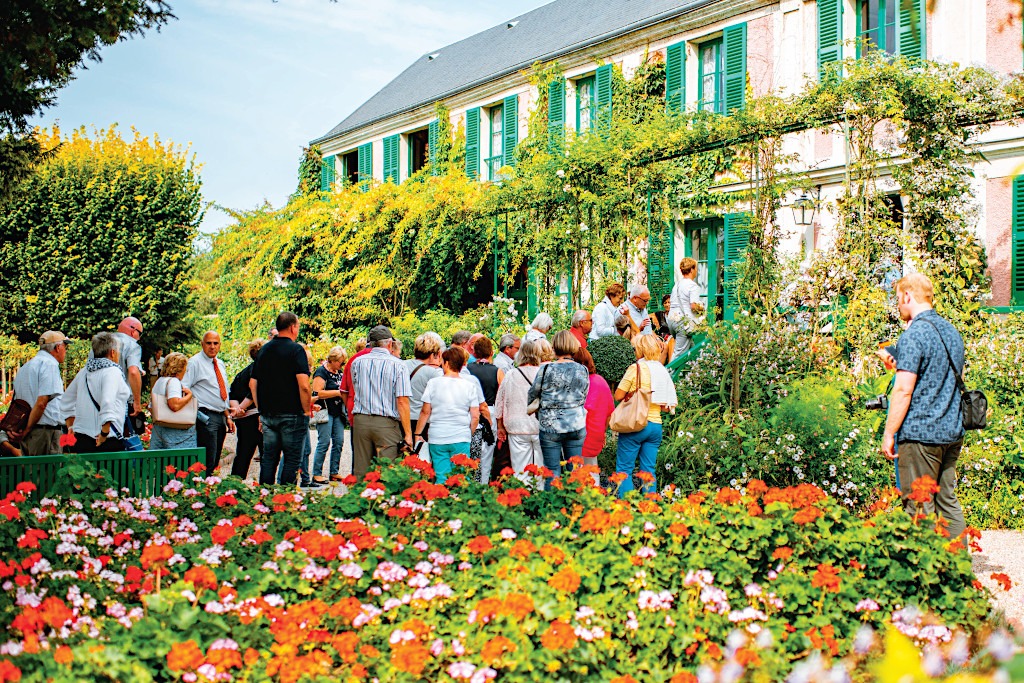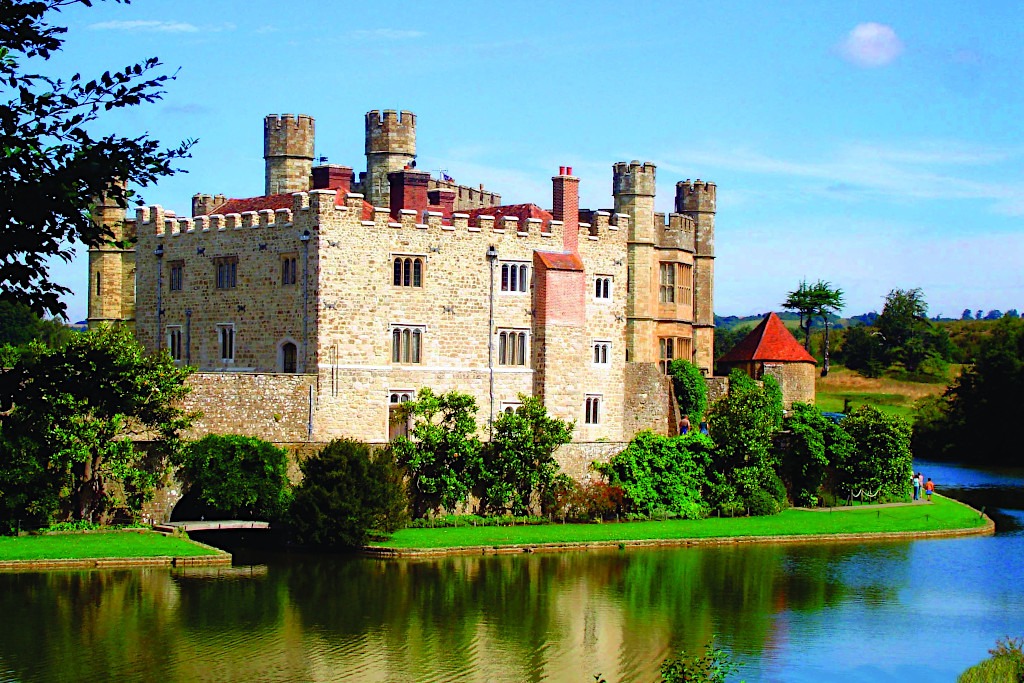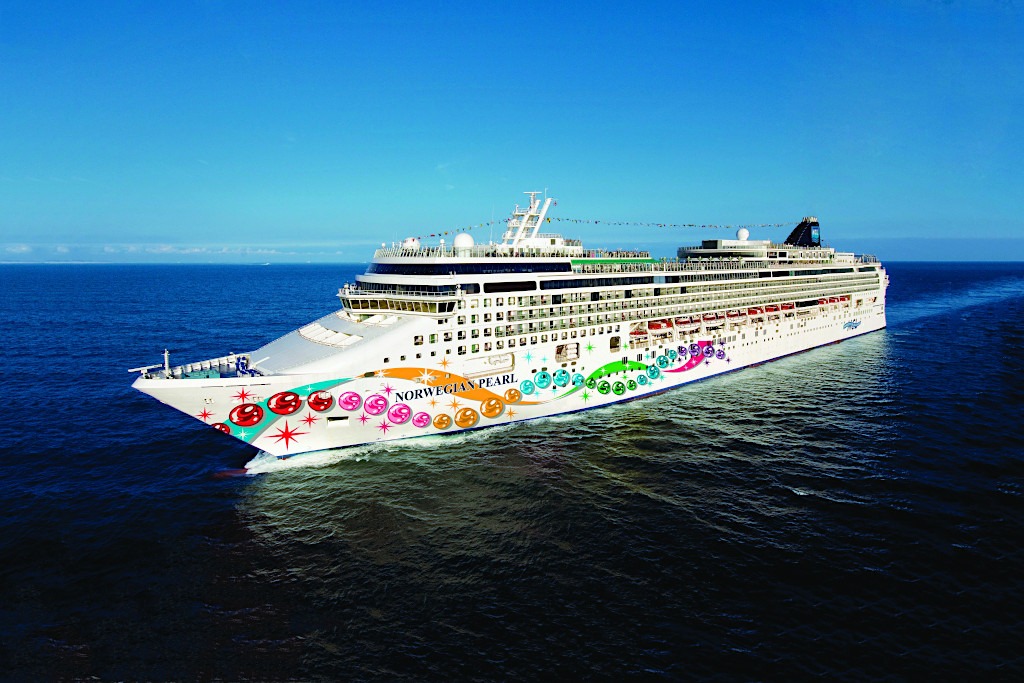PORTS OF CALL
DUBLIN, IRELAND
Dublin is a very walkable city so we chose to explore it independently as opposed to a tour. We did take advantage of The Norwegain Cruise Line bus from the cruise port into town and it left us off at the corner of Merrion Square, right in front of the Oscar Wilde House at the American College Dublin (www.iamu.edu/oscar-wilde-house). Using the GPS on our phone we worked our way into town and made our first stop at the National Gallery of Ireland (www.nationalgallery.ie). What a gorgeous space. A couple of my favorite paintings were The Liffey Swim by Jack B. Yeats and Woman Writing A Letter by Johannes Vermeer. There were Rembrandts, Picassos, Turners and Monets, quite an impressive collection.
From there we walked down to Trinity College to view the The Book of Kells exhibition and The Old Library (www.tcd.ie/visitors/book-ofkells), the famous 8th century illustrated Gospel book in Latin. Lesson learned: Book tickets in advance. The line to enter was endless.
Heading towards the Liffey River, which divides the city, we approached the Ha’Penny Bridge (www.bridgesofdublin.ie). A pedestrian bridge crossing the Liffey, this ornate metal structure was built in 1816 to replace dangerous ferries that chugged vicariously back and forth, overcrowded with passengers. To escape the throngs of tourists we ducked into The Winding Stair (www.winding-stair.com) bookshop directly across the street and discovered they had a charming restaurant on the second floor with a great view of the bridge. Once a meeting ground for artists, musicians, and writers, it closed in 2005, but Elaine Murphy bought the iconic spot and left the bookstore as is for historic value, but revamped the restaurant. Focusing on fresh, local ingredients sourced from the island, she offers Irish comfort food bumped up quite a few notches. The Irish charcuterie board with homemade bread, pickles, and relish plus a couple of pints of Porterhouse Red Ale were delicious and gave us the strength to carry on.
We walked a bit and spotted the famous, and very crowded, Temple Bar (www.thetemplebarpub.com). Fearing we’d never make it back to the boat if we enjoyed another ale or two, we moved on and unexpectedly found Christ Church Cathedral (www.christchurchcathedral.ie) built in 1030. We missed the timing of their melodious bells, but you can check their site for days and hours and hear a sample of what they sound like. Making a full circle back to Wilde’s House we strolled through the lush and beautiful St. Stephen’s Green (www.heritageireland.ie) and through to Merrion Square, where there’s a life-size statue of Oscar Wilde. This being our meeting-up point to return to the ship, we realized we were pretty early so we strolled on and stumbled upon the National Museum Ireland (www.museum.ie). Two floors of fascinating exhibits with a charming gift shop. Added note: both museums in Dublin were free to enter.
LE HAVRE, FRANCE (GIVERNY AND RUEN)
Years ago, I was overwhelmed by an extraordinary exhibit of Claude Monet’s work at the Metropolitan Museum of Art in New York City. This showing cemented my love of the impressionist’s paintings, especially his work centering around his gardens and pond on his property in France. So, when I realized that an optional excursion to the Monet House (www.fondation-monet.com) in Giverny was a possibility, the decision was a no brainer. I could have taken a long bus ride to Paris or traveled to the beaches of Normandy, but I had to see Monet’s home for myself.

House and Garden of Claud Monet in Giverny
Photo: Helen Ross
In 1883, Monet traveled through Giverny by train and found the beauty of the landscape intoxicating. He rented the house, which he would eventually purchase in 1890. He created his gardens and built the Japanese footbridge over his pond. He even imported the water lilies from Egypt and South America. As Monet said, “I’m good for nothing except painting and gardening.”
What I wasn’t expecting was how much I enjoyed touring his home. Left as if he were still living there with his family, you really got a sense of what life must have been like back when he was working and inviting fellow artists to enjoy his property and discuss the current art scene.
The tour included a lunch, just fifteen minutes away at Moulin de Fourges (www.moulindefourges.com). Inspired by Marie Antionette’s hamlet constructed at Versailles, the picturesque watermill restaurant is beyond charming. It was like stepping into a fairytale. We were a large group so we were seated in the converted barn and served a three-course meal where endless bottles of red and white wine were flowing. I’d definitely return to have dinner in the main watermill.
After lunch we traveled to the Medieval city of Ruen with its original half-timbered buildings. Probably best known as the site where Joan of Arc was burned at the stake in 1431, Ruen is the capital of the Normandy region. The charming city also has the Gros Horloge, which is an ornate astronomical clock that sits on a renaissance arch located on the rue du Gros-Horloge. Also of note is the astonishing Ruen Cathedral of Notre Dame (www.cathedrale-rouen.net), built in the 16th century with its enormous nave. Many will recognize its front façade because Monet loved to paint this structure.
TILBURY, ENGLAND
Tilbury cruise terminal is located at the mouth of the Thames River. From here we had several shore excursion options. One was a day trip to Canterbury, which is famed for its Tales, Cathedral, and charming shops. There was a transfer into London, twenty-five miles away, but both of us had been to London before. And there was a trip to visit Leeds Castle, which is what we chose.

Leeds Castle
Photo: Chantal de Bruijne
Leeds Castle (www.leeds-castle.com) is located in Kent. From the entrance area of the estate, there is a winding walkway that meanders through the Queen Alexandra Gardens following the River Len. Situated on five hundred acres, it’s a botanical garden and bird sanctuary full of lush and mature plantings including alders, willows, and birch trees that create a majestic background for the spring flowers such as, daffodils, narcissi, anemones and bluebells. There’s a Segway tour of the grounds if you like, and if you have mobility issues there’s a trolley tram from the parking entrance to the Castle.
The first stone castle was built on this site in 1119, and over the centuries generations of Kings and Queens have lived at Leeds. From 1517 to 1523 Henry VIII made extensive renovations so that he and his first wife, Catherine of Aragon, could live in the dwelling comfortably. By 1552 Leeds transferred from Royal ownership to civilian. In 1926, Lady Baillie, a socialite at the time, bought the estate and her renovations and design choices are what you see in the more modern rooms today. Upon her death she donated the castle and grounds to the Leeds Foundation for all to enjoy. Still, there are areas left untouched and/or restored that allow you to experience Henry and Catherine’s life at Leeds.
On the property is the Castle View Restaurant offering just that, amazing vistas of the castle. Behind the restaurant is a fascinating if not unusual Dog Collar Museum exhibiting collars spanning the past 500 years. Beyond that is the Culpepper Garden, the maze and grotto, as well as the Bird of Prey Centre and the Lady Baillie garden.


